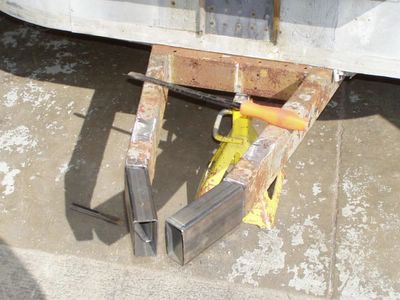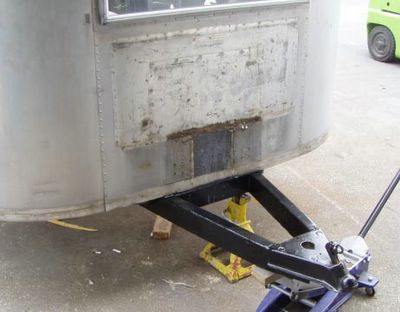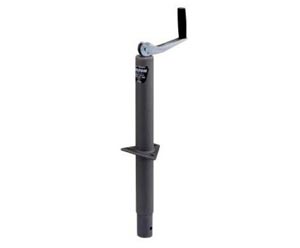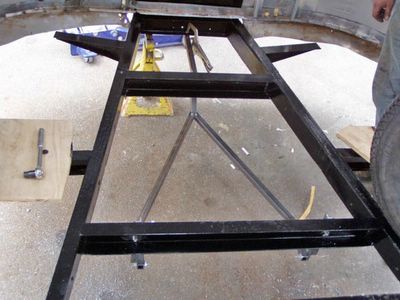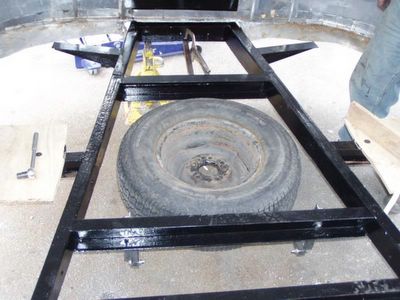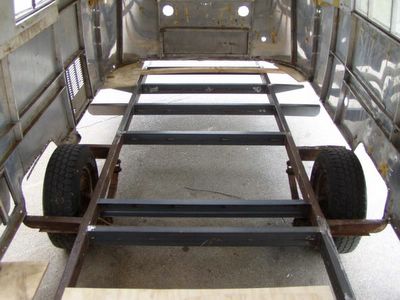Now that the frame repairs are underway, we can see additional fixes that will be needed. Thankfully, most all the outriggers are in good shape and can be reused. However, the rungs on the ladder frame were pretty bad. Several were replaced.

New Rungs Among the Old
As we planned, the back 1/3 of the frame was just cut off and replaced as a whole.
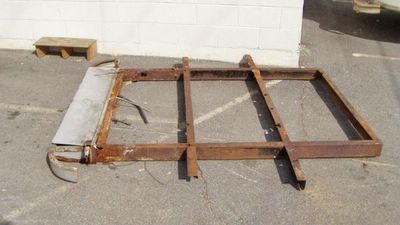
Back End of Chasis Frame.
One of the innovative techniques Colin's shop uses to strengthen old frames is to slide new 1.5" x 3" x .125" thick box channel inside the old 2" x 4" x .100" thick frame rails and then plug weld them in place. This strengthens the entire frame and acts as a great splint between welded-together sections. Because the old frame rails take a turn to form the A frame towards the tongue, Colin slides rails in from both the front and the back.
You can see in the photo below how they have used short pieces of steel bar to block the smaller inside channel in place. Normally, they don't use rebar, but it worked well here in the tongue. Normally, they drill a few holes on one side of the old channel and then put bolts through to push the new inner channel all the way to one side of the old channel. They drill more holes on the other side and plug weld through the holes where the two channels are touching. This locks the box channel in place permanently.
When finished, the frame is stronger than it was originally. It will be somewhat heavier, too, but Colin assures me he won't do anything that will prevent me from staying under 3000 pounds dry weight. (Right, Colin?)
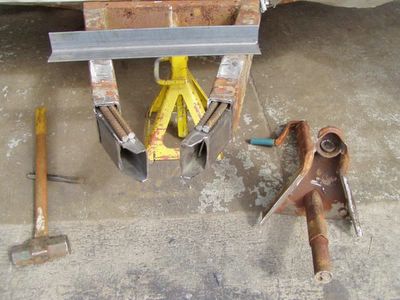
Support Inside Framing. Original Coupler on Ground.

